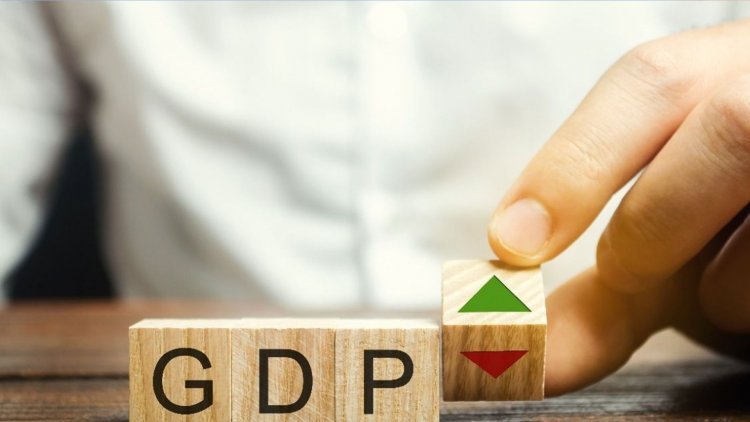According to Pronab Sen, a 6% GDP growth for India in FY23 would be fortunate
The government must provide budgetary support, according to Pronab Sen, a former top statistician of India, to prevent the economy from slowing down while the RBI is putting the breaks on soaring inflation.

According to Pronab Sen, chairman of the Standing Committee on Economic Statistics, India will consider itself fortunate if its Gross Domestic Product (GDP) increases by 6% during the fiscal year 2022–2023.
Sen, who earlier served as India's national statistician, claimed that while the Reserve Bank of India (RBI) may not raise interest rates "overboard," the high levels of uncertainty could harm GDP.
"You really have to dismiss all of these forecasts of growth of 7 percent or more that are circulating. Sen told Moneycontrol in an interview conducted in Delhi that achieving 6 percent this fiscal year would be a miracle.
Sen was chosen to lead the newly established Standing Committee on Economic Statistics in late 2019 amid concerns of political intervention in order to raise the calibre of India's official data.
According to the RBI, India's GDP growth will slow to 7.2% in FY23 from 8.7% in FY22. However, as a result of the impact of the Russia-Ukraine war and the RBI's tightening of financial conditions to combat inflation, experts have recently decreased their predictions.
Nomura reduced its growth prediction for India for 2023 last week from 5.4 percent to 4.7 percent.
Sen claims that India's potential growth rate has decreased to about 5.5%.
Finances are required
Sen believes the government must provide fiscal support in a situation when the monetary authority is exerting pressure to temper raging inflation in order to prevent the economy from overheating and entering a slowdown.
"Once monetary tightening begins, the risks of growth regression increase. You don't want growth to slow down too quickly because if it does, there will inevitably be a tipping point where the contractions gain speed on their own and continue to deteriorate, according to Sen.
"Fiscal policy now has a responsibility to ensure that the economy doesn't cross that breaking point."
The RBI has increased the policy repo rate by 90 basis points in FY23, bringing it to 4.9 percent, and another rate increase is anticipated for August.
One hundredth of a percentage point is referred to as a basis point.
Market forecasts were satisfied by the most recent Consumer Price Index (CPI) inflation reading for June, which was 7.01 percent. However, it exceeded the medium-term target of 4% for the 33rd consecutive month.
Sen anticipates that the repo rate will increase from its present level of 4.9 percent to as much as 5.5-6 percent as the RBI keeps up its fight against high inflation.
The repo rate should be slightly higher than the desired inflation level. It won't be possible to reduce inflation to 4 percent any time soon, but 5.5 percent can be achieved. Therefore, you simply take it there and leave it there while you wait for inflation to decrease, the man advised.
With a cost-of-living crisis, Asia's third-largest economy is barely above its pre-pandemic level and is facing challenges from high commodity prices, a widening current account deficit (CAD), and a possible West Coast recession as central banks around the world accelerate monetary tightening to combat multi-decade high inflation.
"A portion of the slowdown is inevitable and necessary; otherwise, monetary policy may not be successful. Due to the RBI's lack of options, fiscal policy should now be responsible for ensuring that this does not occur, Sen continued.
It's debatable how much assistance the Centre can provide. The central government's fiscal deficit increased to 9.2% of GDP in FY21 before decreasing to 6.7 percent in FY22 as a result of pandemic-related expenses, lost revenue, and bookkeeping improvements.
For FY23, a fiscal deficit of 6.4% was envisioned in the budget. However, Nirmala Sitharaman, the finance minister, faces a challenging task because the amount spent on food subsidies has increased, while excise duty reductions and a smaller RBI dividend have hurt earnings.
Investment dilemma
Investments are essential to the resurgence of India.
Since the so-called micro, small, and medium companies (MSMEs) were severely damaged by the second wave of the pandemic, the pandemic has resulted in the Indian corporate sector gaining a larger proportion of the economy.
"Corporate data recovery is excellent, better than elsewhere in the world, if you look at it. However, if you consider everything together, MSMEs are still in really bad shape"-Sen.
Sen argues that the increase in investments seen in the second half of FY22 is unsustainable since it was driven by a haste to complete projects following previous lockdowns.
"These were initiatives that were already underway, with secured funding and all necessary arrangements. Therefore, there was a great rush to finish that, which is why capex increased in the second half of the previous fiscal year, according to Sen.
Will businesses want to make bigger investments now? Do they possess the confidence, especially in light of the impending global recession at the end of this year and into the following year?
The data support Sen's reservations. Although the government has emphasised the high number of private sector project announcements, not all of the money is leaving the coffers of the corporations. The latest Financial Stability Report from the RBI, which was published in late June, indicates that businesses have been hoarding larger and larger sums of cash.
Relax the rupiah.
Sen is not very concerned about the rupee, despite recent declines to new lows.
Sen asserts that given the rupee's continued overvaluation when measured against other currencies in addition to the US dollar, further depreciation of the rupee is likely necessary.
According to the most recent data, the real effective exchange rate (REER) of the rupee in relation to a basket of 40 foreign currencies was 104.18 in June.
A REER of greater than 100 indicates that the currency is overvalued.
The question is whether you actively manage depreciation—that is, whether you drive the rupee lower or whether you simply permit it to happen? In my view, you should just let it happen if it does. Simply control the volatility, Sen said.
Sen stated that given the overall "unique circumstance," a CAD that is anticipated to reach 3 percent of GDP in FY23 doesn't require a response.




 admin
admin 




















